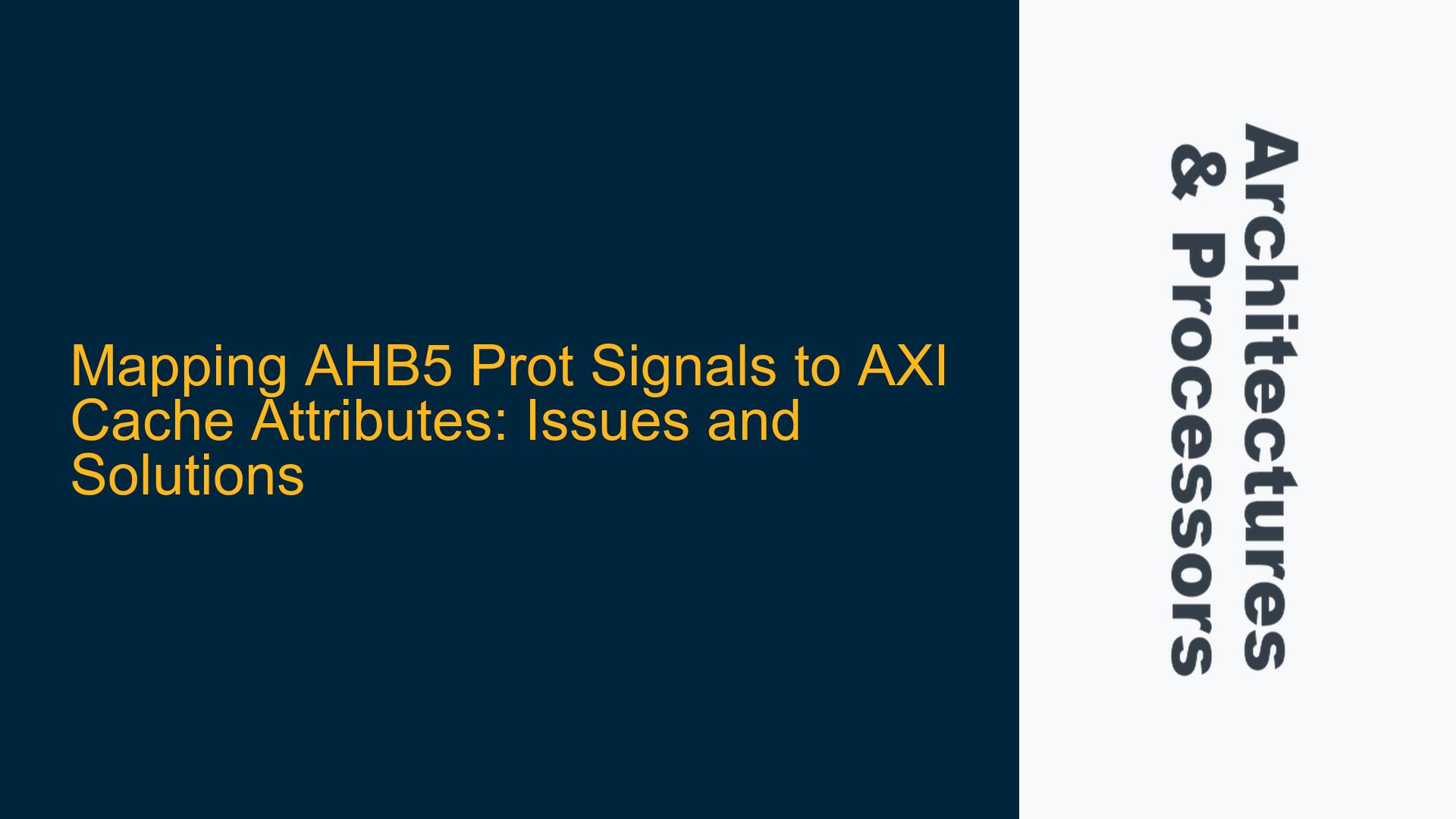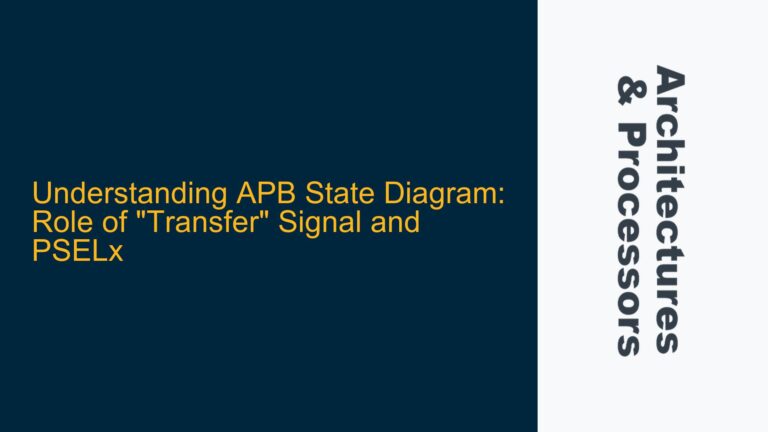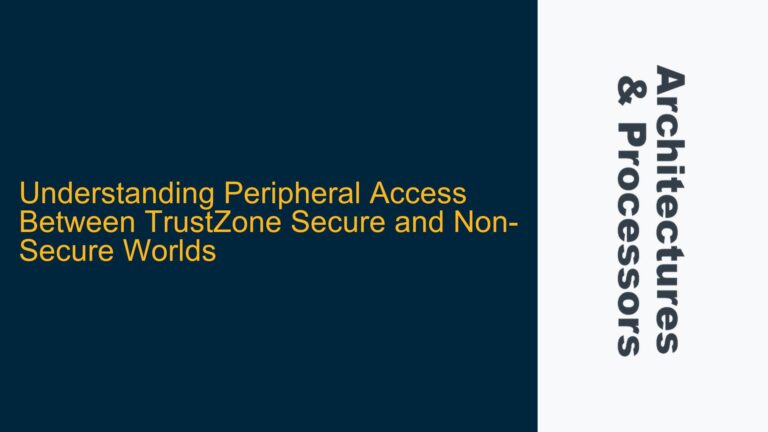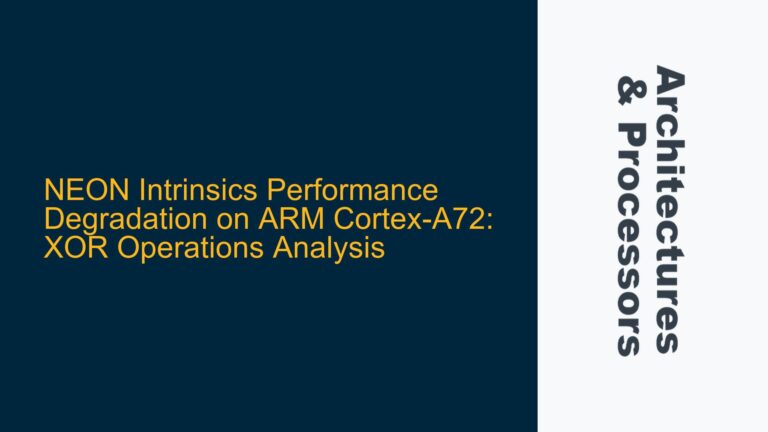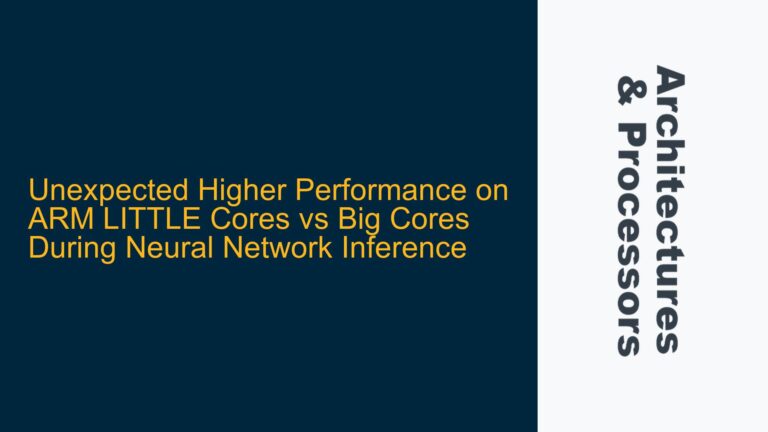AHB5 Prot to AXI Cache Signal Mapping Challenges
The mapping of AHB5 protocol signals to AXI cache attributes is a critical aspect of ensuring proper communication and data integrity between AHB and AXI-based systems. The AHB5 protocol, used in many ARM-based systems, defines a set of protection and cacheability signals (hprot) that must be correctly translated into AXI cache and protection signals (awcache, arcache, axcache, and axprot) for seamless interoperability. However, this mapping is not always straightforward, especially when dealing with different versions of the AXI protocol (AXI3, AXI4, and AXI5) and their respective signal definitions.
One of the primary challenges lies in the differences between the AHB5 hprot signals and the AXI cache attributes. The AHB5 hprot signal is a 7-bit field that encodes information about the transaction’s protection level, cacheability, and shareability. In contrast, the AXI cache attributes are spread across multiple signals, including awcache, arcache, axcache, and axprot, each with its own specific meaning and encoding. This disparity often leads to confusion and potential misconfigurations, particularly when attempting to map AHB5 hprot signals to AXI3 or AXI4 cache attributes.
The table provided in the ARM documentation outlines a mapping between AHB5 hprot signals and AXI5 cache attributes. However, this mapping raises several questions when applied to AXI3 or AXI4. Specifically, the hprot[4] bit, which represents the "look-up" attribute in AHB5, does not have a direct counterpart in the AXI cache signals. Additionally, the shareable attribute (hprot[6]) is not mapped to any signal in AXI3 or AXI4, which could lead to issues in systems where shareability is a critical requirement.
Understanding the nuances of this mapping is essential for ensuring that the cacheability and protection attributes of transactions are correctly preserved when transitioning from AHB5 to AXI. Misconfigurations in this area can result in data corruption, performance degradation, or even system failures, particularly in systems that rely heavily on cache coherency and memory protection mechanisms.
Misalignment of AHB5 hprot[4] and AXI Cache Attributes
One of the most significant issues in the mapping of AHB5 hprot signals to AXI cache attributes is the handling of the hprot[4] bit. In the AHB5 protocol, hprot[4] represents the "look-up" attribute, which indicates whether a transaction should be subject to cache look-up operations. This attribute is crucial for determining whether a transaction should interact with the cache or bypass it entirely, depending on the system’s caching policies.
However, in the AXI protocol, there is no direct equivalent to the hprot[4] bit. The AXI cache attributes (awcache, arcache, and axcache) primarily focus on defining the cacheability and bufferability of transactions, but they do not explicitly include a "look-up" attribute. This misalignment can lead to situations where the cacheability of a transaction is not correctly preserved when transitioning from AHB5 to AXI, potentially resulting in incorrect cache behavior.
For example, if a transaction on the AHB5 bus is marked as non-cacheable (hprot[4] = 0), but the corresponding AXI transaction is incorrectly mapped to a cacheable attribute, the transaction may inadvertently interact with the cache, leading to data inconsistencies or performance issues. Conversely, if a cacheable transaction on the AHB5 bus is incorrectly mapped to a non-cacheable attribute on the AXI bus, the system may fail to take advantage of caching, resulting in unnecessary memory accesses and reduced performance.
The absence of a direct mapping for hprot[4] in the AXI cache attributes necessitates careful consideration when designing the translation logic between AHB5 and AXI. In some cases, it may be necessary to infer the cacheability of a transaction based on other hprot signals or system-specific caching policies. However, this approach introduces additional complexity and the potential for errors, particularly in systems with complex caching hierarchies or multiple memory regions with different caching requirements.
Shareability Attribute (hprot[6]) and Its Implications in AXI3/AXI4
Another critical issue in the mapping of AHB5 hprot signals to AXI cache attributes is the handling of the shareability attribute (hprot[6]). In the AHB5 protocol, hprot[6] indicates whether a transaction is shareable, meaning that it can be accessed by multiple masters or agents in the system. This attribute is essential for ensuring proper cache coherency and data consistency in multi-master systems, where multiple processors or DMA controllers may access the same memory regions.
However, in AXI3 and AXI4, there is no direct equivalent to the hprot[6] bit in the cache attributes. The shareability of a transaction in AXI is typically determined by the system’s interconnect and memory system, rather than being explicitly encoded in the transaction attributes. This lack of a direct mapping can lead to issues in systems where shareability is a critical requirement, particularly in systems with complex cache coherency protocols or distributed memory architectures.
For example, if a shareable transaction on the AHB5 bus is incorrectly mapped to a non-shareable attribute on the AXI bus, the system may fail to maintain cache coherency, leading to data inconsistencies or race conditions. Conversely, if a non-shareable transaction is incorrectly mapped to a shareable attribute, the system may incur unnecessary overhead in maintaining cache coherency, resulting in reduced performance.
In some cases, it may be possible to infer the shareability of a transaction based on other hprot signals or system-specific policies. For example, transactions that are marked as cacheable (hprot[3] = 1) may be assumed to be shareable in systems where cache coherency is required. However, this approach is not always reliable, particularly in systems with mixed cacheability and shareability requirements.
Implementing Correct AHB5 to AXI Cache Attribute Mapping
To address the challenges associated with mapping AHB5 hprot signals to AXI cache attributes, it is essential to implement a robust and well-defined translation logic that takes into account the specific requirements of the system and the nuances of the AHB5 and AXI protocols. This translation logic should be designed to preserve the cacheability, protection, and shareability attributes of transactions as accurately as possible, while also accounting for any differences between the AHB5 and AXI protocols.
One approach to implementing this translation logic is to use a lookup table or mapping function that explicitly defines the relationship between AHB5 hprot signals and AXI cache attributes. This lookup table can be based on the mapping provided in the ARM documentation, but it should also include additional logic to handle cases where there is no direct mapping, such as the hprot[4] and hprot[6] bits.
For example, the lookup table could include the following mappings:
| AHB5 hprot Signal | AXI Cache Attribute | Notes |
|---|---|---|
| hprot[5] | awcache[3] (Write) | Cacheable attribute for write transactions |
| hprot[5] | arcache[2] (Read) | Cacheable attribute for read transactions |
| hprot[3] | axcache[1] | Bufferable attribute |
| hprot[2] | axcache[0] | Modifiable attribute |
| ~hprot[0] | axprot[2] | Privileged access attribute |
| hnonsec | axprot[1] | Non-secure access attribute |
| hprot[1] | axprot[0] | Instruction/data access attribute |
| hprot[4] | (Inferred) | Cacheability inferred from other hprot signals |
| hprot[6] | (Inferred) | Shareability inferred from system policies |
In addition to the lookup table, the translation logic should also include mechanisms for handling cases where the cacheability or shareability of a transaction cannot be directly inferred from the hprot signals. For example, the logic could include default values or system-specific policies for determining the cacheability and shareability of transactions based on the memory region being accessed or the type of transaction (e.g., read vs. write).
Another important consideration when implementing the translation logic is the timing of cache invalidation and data synchronization operations. In systems where cache coherency is critical, it may be necessary to perform cache invalidation or data synchronization operations when transitioning between AHB5 and AXI transactions. These operations should be carefully timed to ensure that they do not introduce unnecessary latency or interfere with other system operations.
For example, if a transaction on the AHB5 bus is marked as non-cacheable (hprot[4] = 0), the translation logic should ensure that the corresponding AXI transaction is also marked as non-cacheable and that any cached data associated with the transaction is invalidated before the transaction is executed. Similarly, if a transaction is marked as shareable (hprot[6] = 1), the translation logic should ensure that the appropriate cache coherency mechanisms are in place to maintain data consistency across multiple masters or agents.
In conclusion, the mapping of AHB5 hprot signals to AXI cache attributes is a complex and nuanced process that requires careful consideration of the specific requirements of the system and the differences between the AHB5 and AXI protocols. By implementing a robust and well-defined translation logic, it is possible to ensure that the cacheability, protection, and shareability attributes of transactions are correctly preserved, thereby avoiding potential issues such as data corruption, performance degradation, or system failures.
